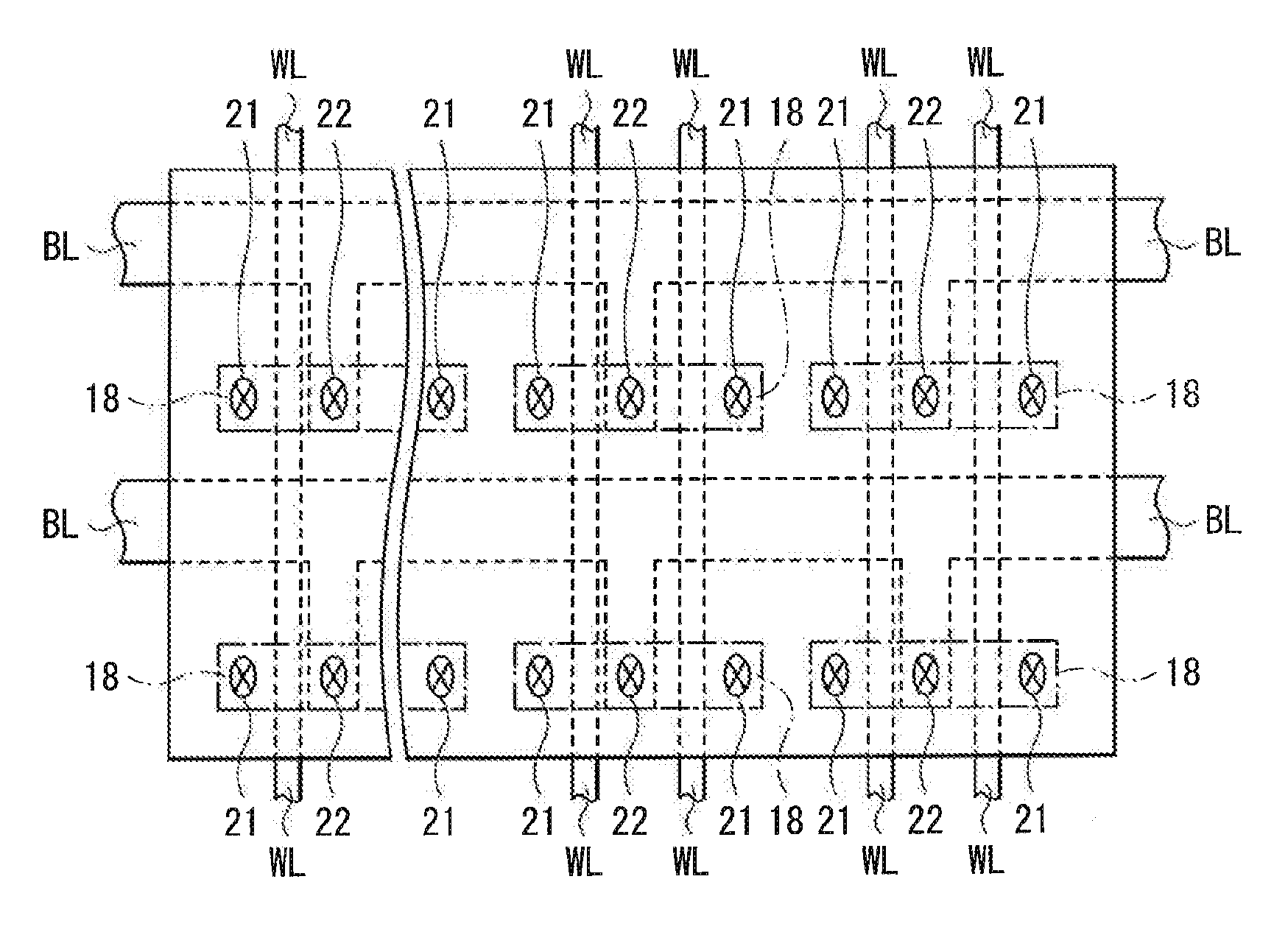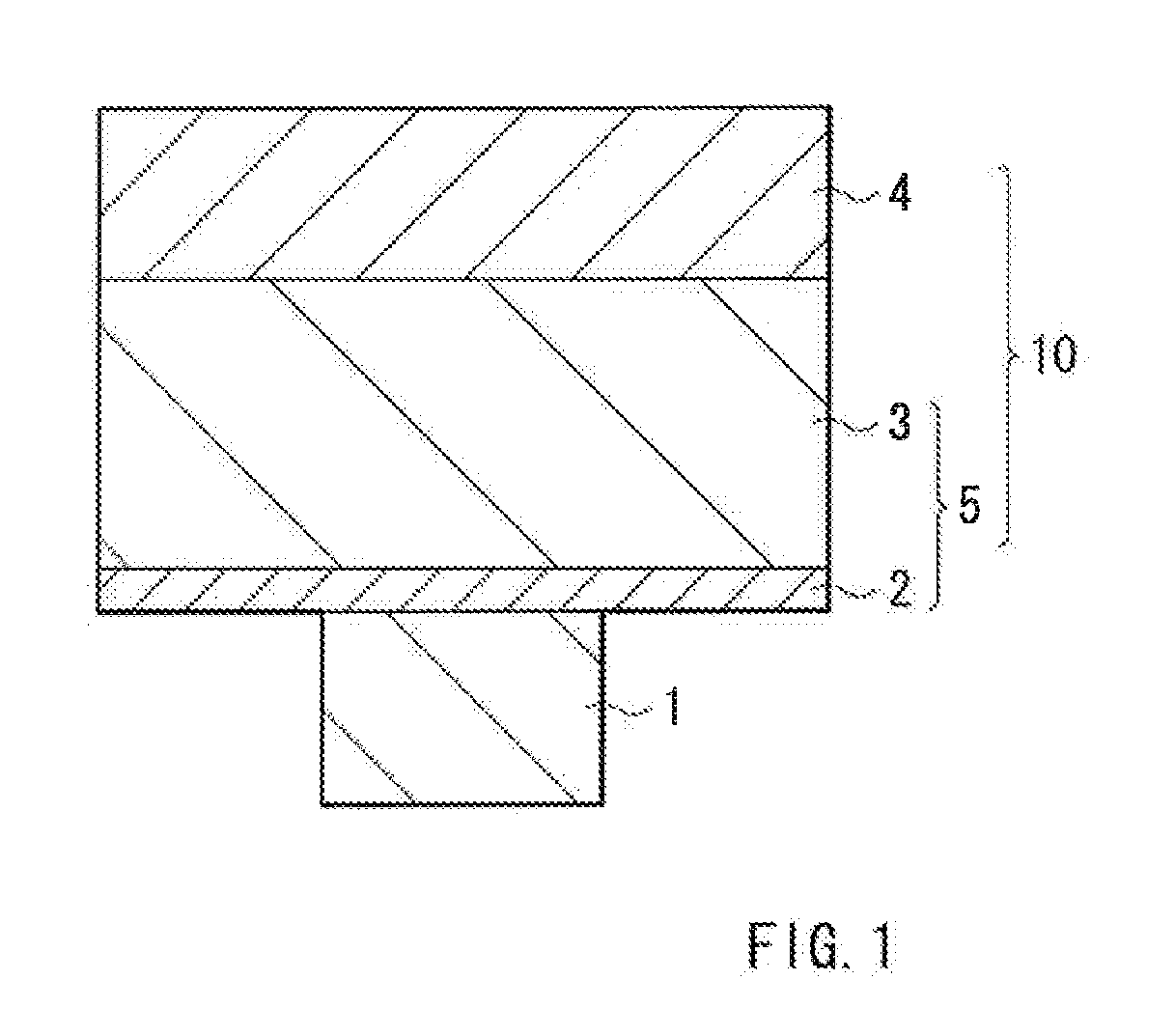Memory element and memory device
a memory element and memory technology, applied in semiconductor devices, digital storage, instruments, etc., can solve the problems of low performance for retaining information, change in resistance value, and inability to retain information, and achieve improved retaining performance in erased states and high resistance states. , the effect of favorable retaining property
- Summary
- Abstract
- Description
- Claims
- Application Information
AI Technical Summary
Benefits of technology
Problems solved by technology
Method used
Image
Examples
example 1
[0067]As illustrated in FIG. 2 and FIG. 3, the MOS transistor was first formed on the semiconductor substrate 11. Then, an insulating layer was formed to cover a surface of the semiconductor substrate 11, and a via-hole was formed on the insulating layer. Subsequently, the inside of the via-hole was filled with an electrode material consisting of W (tungsten) with a CVD (Chemical Vapor Deposition) method, and a surface thereof was planarized with a CMP (Chemical Mechanical Polishing) method. In addition, these processes were repeated to form the plug layer 15, the metal wiring layer 16, the plug layer 17, and the lower electrode 1, and further, the lower electrode 1 was patterned for each memory cell. A size of an opening of the lower electrode 1 was configured with a diameter of 300 nm. Then, etching was performed by about 1 nm with reverse sputtering utilizing a RF power source, in order to remove an oxide on an upper surface of the lower electrode 1. At this time, a surface of th...
examples 2 to 5
[0074]In the Examples 2 to 5, other transition metal elements Ta, Cr, Ti, and W were used as the metal element to be ionized in the ion source layer 3. The film-thickness was 45 nm each.
[0075]Example 2: Ta 20%-Te 40%-Al 40% (atomic %)
[0076]Example 3: Cr 30%-Te 30%-Al 40% (atomic %)
[0077]Example 4: Ti 30%-Te 30%-Al 40% (atomic %)
[0078]Example 5: W 15%-Zr 5%-Nb 5%-Te 35%-Al 40% (atomic %)
examples 10 to 15
[0086]Films having the following composition ratios with the film-thicknesses of 45 nm were formed by using Zr and Cu as the metal element to be ionized of the ion source layer 3, respectively. Ratios of Zr and Cu were each represented by a fraction ratio of Zr / (Cu+Zr), and were varied from 1, 0.69, 0.5, 0.32, and 0.15 to 0.
[0087]Example 10: Zr 16%-Te 44%-Al 40% (atomic %)
[0088]Example 11: Zr 11%-Cu 5%-Te 44%-Al 40% (atomic %)
[0089]Example 12: Zr 8%-Cu 8%-Te 44%-Al 40% (atomic %)
[0090]Example 13: Zr 10%-Cu 21%-Te 29%-Al 44% (atomic %)
[0091]Example 14: Zr 5%-Cu 28%-Te 28%-Al 39% (atomic %)
[0092]Example 15: Cu 45%-Te 23%-Al 32% (atomic %)
PUM
 Login to View More
Login to View More Abstract
Description
Claims
Application Information
 Login to View More
Login to View More - R&D
- Intellectual Property
- Life Sciences
- Materials
- Tech Scout
- Unparalleled Data Quality
- Higher Quality Content
- 60% Fewer Hallucinations
Browse by: Latest US Patents, China's latest patents, Technical Efficacy Thesaurus, Application Domain, Technology Topic, Popular Technical Reports.
© 2025 PatSnap. All rights reserved.Legal|Privacy policy|Modern Slavery Act Transparency Statement|Sitemap|About US| Contact US: help@patsnap.com



